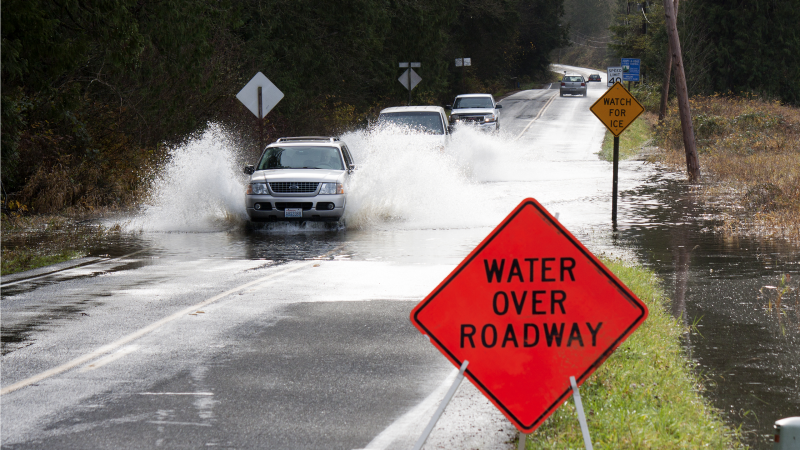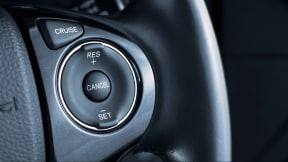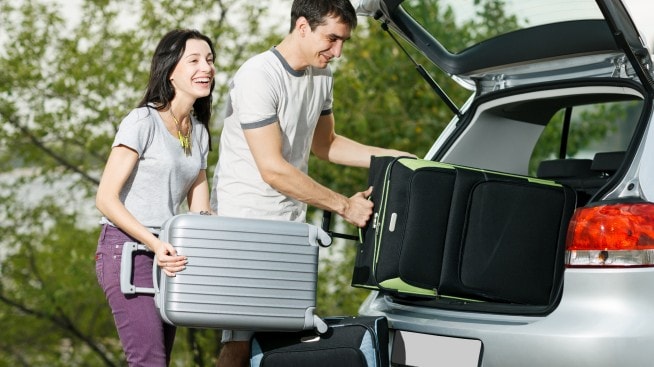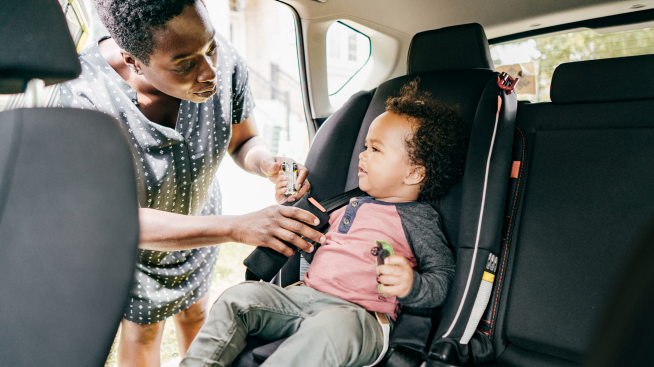Hydroplaning 101: Driving safely on wet roads

Have you noticed more accidents or people stuck on the side of the road during rainy weather? Wet or wintry weather conditions cause a loss of friction and traction, which can result in drivers hydroplaning, losing control and having an accident. Here’s what you need to know to stay a little safer when driving on a wet road.
What is hydroplaning?
Hydroplaning (sometimes referred to as aquaplaning) occurs in wet weather, when a film of water on a slick road causes your car’s tires to temporarily lose contact with the road surface. This results in loss of control over steering and braking. If you drive through a puddle that’s deeper than it looks, you may feel the steering wheel go light for a moment. That’s a mild case of hydroplaning.
Though it may only be temporary, it’s quite harrowing for drivers to experience as even a few short seconds of lost control can result in serious — potentially even fatal — accidents.
What causes hydroplaning?
If you take a close look at your tires, you’ll notice they have a bunch of grooves on their surface. These act as canals to channel water away from your tire’s contact patch (the area physically touching the road at any given moment). When the amount of water exceeds the tire treads’ ability to disperse water quickly enough, the contact patch starts to ride on the surface of the water instead.
Hydroplaning may also occur when the roads aren’t excessively wet, but the car is traveling at a speed that exceeds how quickly the treads can disperse water, or if the treads themselves are damaged or worn.
How to avoid hydroplaning
Your tires play a pretty important role when it comes to hydroplaning incidents. Here are a few tips that could help minimize your risk of hydroplaning.
- Properly inflate tires to the right pressure: Over- or under-inflated tires tend to run a greater risk of hydroplaning because they potentially alter the shape of the contact patch. Properly inflated, well-maintained tires ensure the car is riding properly.
- Ensure tires have adequate tread depth: The tread grooves of your tires bear the primary responsibility for water dispersal, which can’t happen as effectively if the treads are too worn.
- A quick-but-unofficial way to check tread depth is with a standard U.S. quarter by placing the coin into the most-worn (lowest) tread of your tire, such that George Washington’s head is upside-down going into the groove. If the tread only reaches or fails to reach the top of Washington’s head, the tire's no good. If it goes past and covers up parts of the head, you still have enough tread left for the tire to be effective.
- Slow down: Since hydroplaning can occur even on less-than-flooded roads, if you’re driving faster than your treads can disperse water, reducing your speed on wet roads could help you avoid such an incident.
- Be wary of water: It helps to drive slowly and carefully past puddles or standing water, as it can be easy to misjudge just how deep they might be.
If your car hydroplanes
Even with the best precautions, it’s still possible you may find yourself hydroplaning someday. If this ever happens to you, the following could help keep you safe:
- Stay calm: When you’re hydroplaning, jerking the steering wheel or slamming the brakes can make the skidding worse. The uncomfortable reality is that you can’t do much until the car hits a patch of road without water on it and regains traction. Staying calm and collected may help you be ready to react appropriately when the opportunity arises.
- Slow down: Instead of slamming the brakes to come to a stop, it may help to gently release the accelerator so the car can come to a more natural deceleration.
- Brake lightly: If your car has an anti-lock braking system (ABS), which is often standard on most newer cars, it may also help to gently apply the brakes to further help bring the car to a gradual stop.
- Steer loosely: If possible, it may help to steer gently into the direction you’d like to go in, without jerking the wheel around too much one way or the other.
- Pull over: When it’s safe to do so, slowly pull over to the side of the road or a shoulder, away from traffic. Check to see if you or anyone else in the car needs assistance and take a few minutes to regain your composure if you need to before getting back on the road.
In summary
Hydroplaning is a loss of traction and control, caused by your tires losing contact with the road surface due to excess moisture. Tire treads are designed to disperse water away from the tire contact patch. If there’s too much water, you’re driving too fast, or your treads are too worn, this can’t happen as effectively. The tires start to ride on a film of water instead of the road, resulting in a scary loss of control. Hydroplaning is the cause of a significant number of weather-related auto accidents every year, but with knowledge and proper car maintenance, you can prevent it from happening to you — or at the very least, be ready if it does.



